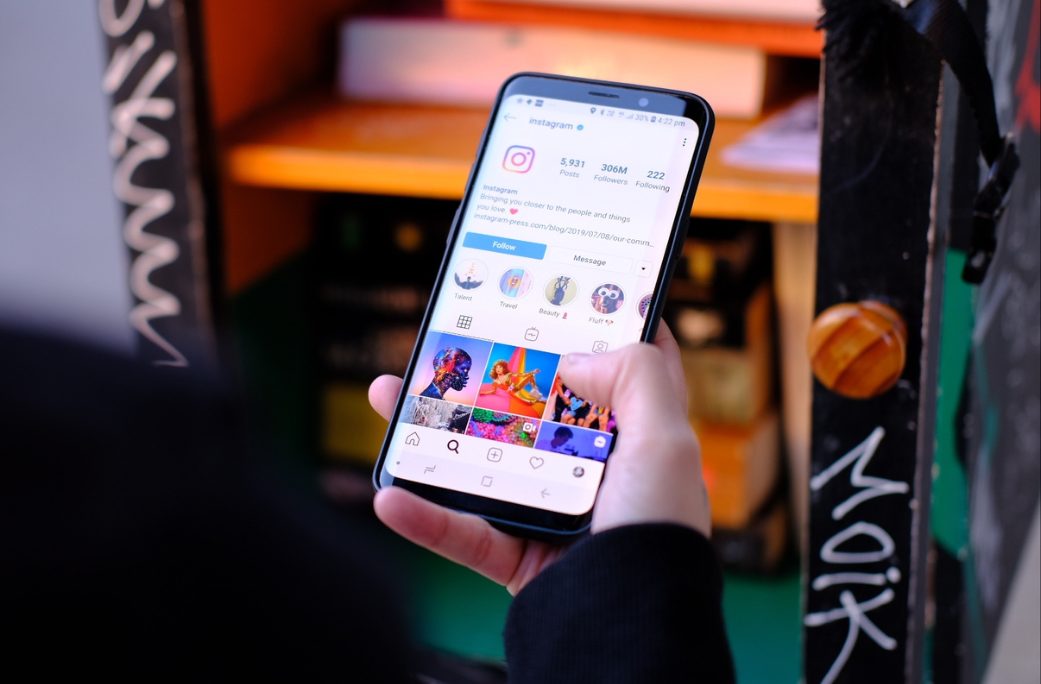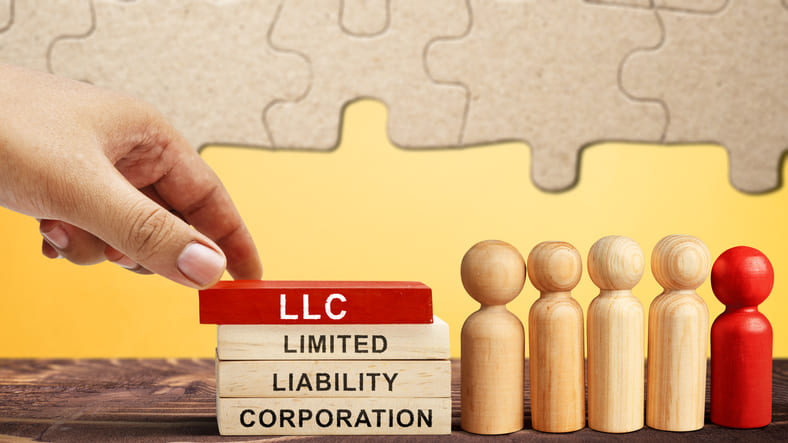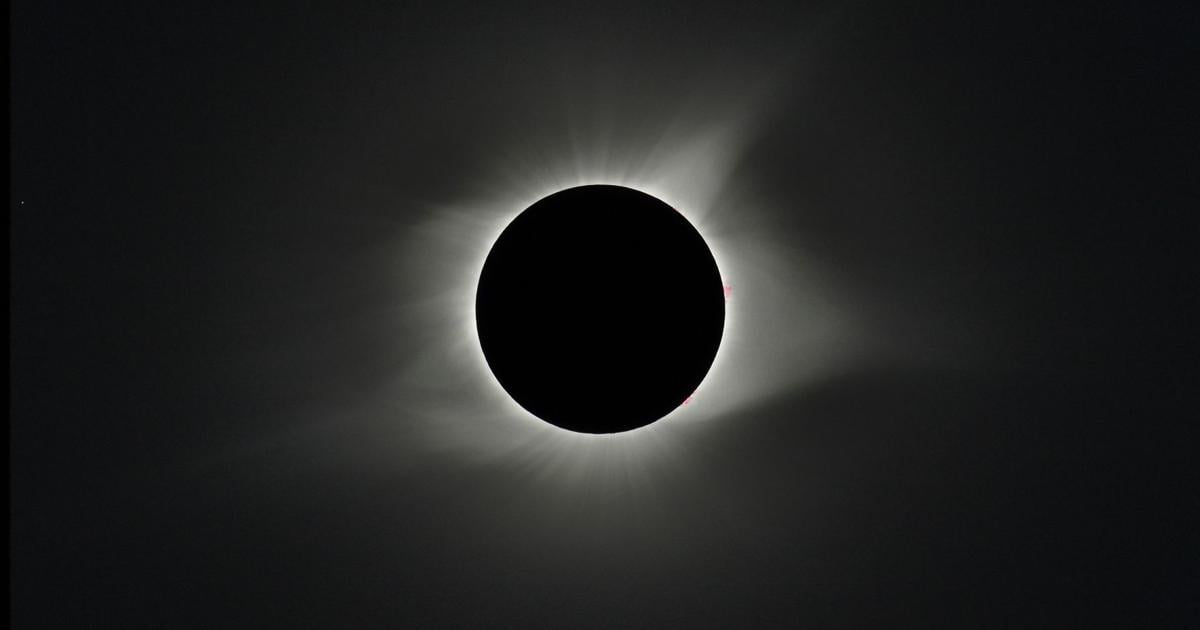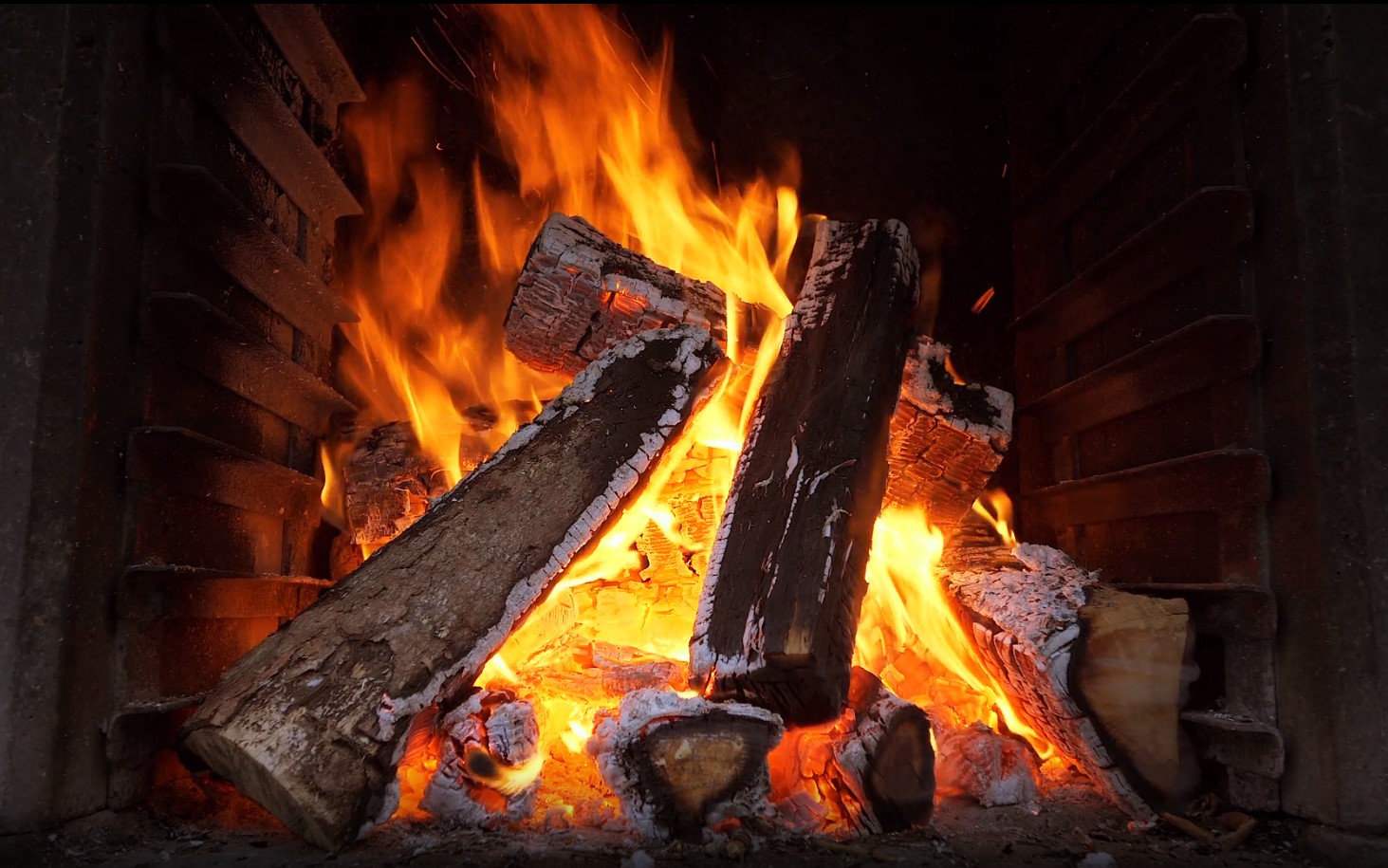[ad_1]
It’s hard to believe, but it’s been seven years since the last total solar eclipse.
It seems like maybe two or three years at most. Four years, tops.
But no, it has been seven. An entire pandemic has come and mostly gone since then. In the intervening time, we’ve had the Tide pod challenge, a devastating fire at Notre Dame Cathedral, a ship that got stuck sideways in the Suez Canal and politics that got stuck sideways in a country.
And we’ve survived it all.
Saluki cheerleaders try out eclipse glasses that they were giving out to visitors to Saluki Stadium on the campus of Southern Illinois University Carbondale on Aug. 21, 2017.
The eclipse of 2017 was, for many who witnessed it, a profound experience, a moment of indescribable emotion. For some who think along such lines, it was an example of mankind’s communion with the divine spirit.
For those who do not, it was an awe-inspiring display of the power of nature, an unassailable illustration of what can happen when things quite literally line up the right way.
People are also reading…
The St. Louis region is in the path of its second solar eclipse in less than seven years on April 8. Will this year’s eclipse eclipse the experience from 2017?
The Moon begins to move in front of the Sun at the start of the eclipse as seen in Chesterfield on Aug. 21 2017. Chesterfield received about 1 minute and 20 seconds of totality.
What exactly is an eclipse, again?
During a solar eclipse, the moon comes between the Earth and the sun. The moon’s shadow falls over part of the Earth. To the perspective of people in that shadow, it looks like the moon blocks the sun.
Don Ficken, chairman of the St. Louis Eclipse 2017 Task Force, gives a play-by-play of what viewers might see on the day of the solar eclipse.
In a total solar eclipse, the moon precisely blocks the entire sun for people in the central part of that shadow, says Don Ficken, the St. Louis regional chair of the Missouri Eclipse Task Force.
Total solar eclipses only happen because of a quirky coincidence, Ficken says. The sun’s circumference is 400 times larger than the moon’s, and the sun is also 400 times farther away from the Earth than the moon is.
Will 2024 be a total eclipse?
It will be, but not in St. Louis. This time, St. Louis itself will only see 99% of a total eclipse, and the missing 1% makes all the difference. During a partial solar eclipse, even with 99% of the sun blocked, there will only be a partial dimming of light; it will be more like twilight than nighttime.
For the full effect — where you can see the sun’s full corona, the ring of fire, all the way around the moon — you’ll have to travel at least an hour or two south or east to be in the path of totality. That is where the moon will appear to completely block the sun.
The corona isn’t the sun itself?
No. The corona is made up of superheated gasses that surround the sun. They are much less dense than the sun itself, so they are not nearly as bright; only about the brightness of a full moon, Ficken says. That is why you can look at it without harming your eyes.
It is always there, but you can’t see it with the naked eye because it is visually obliterated by the brightness of the sun. With the sun’s surface blotted out by the moon during an eclipse, they become gloriously visible.
Nancy Kolaz, from Chesterfield, looks up as the moon begins to blot out the sun during the eclipse over Chesterfield on Aug. 21, 2017.
Do I have to wear eclipse glasses?
You absolutely should if you plan to look directly at the eclipse. Although eclipses are no brighter than looking directly at the sun, you can quickly damage your eyes by doing either one.
Looking at an eclipse for as little as 100 seconds or less can cause permanent blindness, according to Nvision eye clinics. Looking directly at the sun or an eclipse for even short periods of time can cause anything from headaches and discomfort looking at bright lights to distorted or blurry vision and trouble distinguishing shapes.
One way to tell you have hurt your eyes is to look at someone’s face. If you can see all of the features, then you are probably fine. But if certain features are blocked out — an eye, perhaps, or a nose — then you may have burned your retina and you should get medical treatment right away.
Another test is to try reading a newspaper or a magazine. If some of the letters appear to be missing, seek medical treatment.
And it is possible that a small number of people who wear protective glasses properly and only take them off during totality will nevertheless end up hurting their eyes. But that damage is usually minor and temporary, nothing more than a burning sensation.
If necessary, you can treat it with over-the-counter eye drops three or four times a day for a couple of days. If it doesn’t go away by then, you should be examined by an eye doctor.
When can I remove the glasses?
In the path of totality, and only in the path of totality, you can safely remove your eclipse glasses or handheld viewers when the sun is completely blocked by the moon and all you can see is the corona.
You can take them off when you see the “diamond ring,” Ficken says — that is when the moon is surrounded by a thin ring of light, with one bright and shiny spot just on one end. It resembles a celestial diamond ring. When you see the diamond shine on the other side of the moon, that is when it is time to put the glasses back on.
Be sure to only use ISO certified eclipse glasses; last time, the market was flooded with fraudulent, ineffective glasses. This year, the American Astronomical Society did not see any fakes or counterfeits until about two weeks ago, when they started showing up.
The best way to tell if your eclipses glasses are the real thing is to wear them. First, try them inside; you shouldn’t be able to see anything through them except possibly a faint image of a very bright light. Next, try them outside on a sunny day, and look around; again you should not be able to see anything except perhaps the sun’s reflection off a shiny surface or a puddle — and that should be very faint.
Finally, try looking through them at the sun for less than one second. The sun should appear sharp-edged and round, and should be comfortably bright. If your glasses pass all three tests, they are probably safe, according to the AAS.
If I am wearing eclipse glasses, can I look at the sun through a camera lens, binoculars or other optical device?
Absolutely not! Those devices concentrate the rays and will burn through the filter, instantly causing severe eye damage, according to NASA.
Also, you should inspect your eclipse glasses or hand-held solar viewer ahead of time. If it is torn, scratched or damaged in any way, discard it and do not use it to view the eclipse.
What about a pinhole projector?
It will work, but it’s not as much fun as watching the eclipse through glasses.
To make a pinhole projector, use a pin to make a small hole in a piece of paper or card stock. Face the paper toward the sun so that the light shines through the hole and onto a piece of white paper that you hold some distance behind the first piece.
An image of the sun being blocked by the moon will appear on the second sheet. According to Ficken, the ideal distance between the sheets is 1,000 times the size of the hole. But just seeing where the image looks the sharpest will work, too.
Where can I go to see the eclipse?
The good news is you don’t have to go far.
The moon’s orbit is elliptical, and this time it is a little farther from the Earth than it was in 2017. That means its shadow will be wider. Nearly everyone in the United States will be able to see at least some portion of the eclipse, with the path of totality covering a swath from Eagle Pass, Texas, northeast to Presque Isle, Maine.
As the moment of totality rapidly approaches, Henry Jennings, 10, in front, his sister Lucy Jennings, 8, and their grandmother Mary Kinney, all of Webster Groves, make sure their glasses are properly on. The pool at the Webster Groves Rec Center opened for special hours Aug. 21, 2017, for eclipse-watchers.
The path of totality is wider this time, too — again, because the moon is farther away. On April 8, it will range from 108 to 122 miles wide across the continent, compared with about 70 miles in 2017. And that means the time of totality is longer, too.
In 2017, Carbondale, Illinois, experienced the longest period of totality, 2 minutes and 42 seconds. This year, an area northwest of Torreón, Mexico, will see a total eclipse for 4 minutes and 28 seconds. In the United States, the time of totality will lessen somewhat as the shadow moves north and east.
The place to see the longest period of totality in Missouri is the town of Doniphan, about 20 miles southwest of Poplar Bluff; it will be dark there for an impressive 4 minutes and 12 seconds. By an astonishing coincidence, Carbondale will once again be in the center of the action, with nearly 4 minutes and 9 seconds of total solar eclipse.
The moon passes in front of the sun during totality of a solar eclipse on Monday, Aug. 21, 2017, near Perryville, Mo.
What time does it start?
That depends on where you are. The moon’s shadow will be moving in a northeasterly direction, so times get later the farther north and east you go.
The eclipse will first be seen in Missouri at Southwest City, in the southwest corner of the state, at 12:33 p.m.; folks there will see the moon block 97% of the sun at 1:51 p.m. The path of totality first enters Missouri in Dugginsville, in Ozark County, at 12:36 p.m.; the sun will be completely blocked beginning at 1:54 p.m.
Illinois will first see the eclipse begin at 12:42 p.m. at the southern tip of the state on Bumgard Island; the total eclipse there will begin at 1:58 p.m.
Downtown St. Louis will first begin to see the eclipse at 12:43 p.m. It will reach its maximum coverage, a little more than 99%, at 2:01 p.m. In the southwestern suburbs, such as Fenton, it will begin at 12:42 p.m.
Ninety-nine percent is good enough, right?
“If you’ve got a chance to go to the Super Bowl, why are you sitting in the parking lot?” says Ficken.
Be ready for traffic
Hotels anywhere near the path of totality have been sold out or nearly sold out for months. And officials expect some of the smaller roads to be jammed before and especially after the eclipse.
The Illinois Department of Transportation estimates crowds of 100,000 to 200,000 people will come to the southern part of the state, where the path of totality will run, and warns of “heavy congestion” on the roads for a couple of hours after the eclipse.
The Missouri Department of Transportation is even more dramatic. They are expecting “extreme congestion… once the eclipse passes in the afternoon.”
Ficken says the best advice is to go early and stay late.
Vanessi Halasey of Belleville and Kaelan Davis of Mahomet, Ill., watch the solar eclipse as it approaches totality on Aug. 21, 2017, in Makanda, Ill. “I can see just a little part of it and I’ve never seen that before,” Halasey said. “I’m so excited. I can’t wait until I see the totality!”
What will happen during the eclipse?
As the moon moves to block the sun, it will become dark outside, and colder. Street lights may turn on. There may be sudden gusts of wind. Some animals will become confused or alarmed; listen for birds chirping and other signs of evening or morning.
More important to human viewers, perhaps, will be the feelings of peace and harmony that seem to accompany the witnessing of such an event.
Are there viewing parties?
You bet. People will be congregating to watch the eclipse wherever there is open space free from trees. Some other organized events — and we stress, these are only some of the events — will be at:
In St. Louis: St. Louis Science Center (5050 Oakland Avenue), McDonnell Planetarium (Clayton Avenue at Faulkner Drive in Forest Park), St. Louis Central Library (1301 Olive Street, children through Grade 6), Pulitzer Arts Foundation (3716 Washington Avenue), Moonrise Hotel (6177 Delmar Boulevard, $10), City Museum rooftop (750 North 16th Street, $28 for general admission plus rooftop access), Tom Sawyer Riverboat (50 South Leonor K. Sullivan Boulevard, $24 adults, $22 seniors, $14 children 3-15; boat leaves dock at 1:30 p.m.).
In the Missouri Counties: The Boone’s Trail Branch of the St. Charles City-County Libraries (10 Fiddlecreek Ridge Road, Wentzville; families and children through Grade 5), Defiance Ridge Vineyards (2711 South Highway 94, Defiance); Lost Hill Lake (2300 Mill Hill Road, St. Clair), Brentwood Park (2924 Brazeau Avenue, Brentwood), Washington University (front steps of Brookings Hall, 1 Brookings Drive, University City), Wild Sun Winery & Brewery (4830 Pioneer Road, Hillsboro).
And in Illinois: Eckert’s Belleville Farm (951 South Green Mountain Road, Belleville), Herald Square (115 East Clay Street, Collinsville), Cahokia Mounds (30 Ramey Street, Collinsville).
You can get glasses at many of these locations.
When is the next eclipse?
The next total solar eclipse visible anywhere in North America will be on Aug. 23, 2044. It will only be visible in North Dakota, Montana and the Canadian Provinces of Saskatchewan, Alberta, British Columbia, Yukon and the Northwest Territories.
The next time St. Louis will be directly in a path of totality will be the year 2505. You might want to think about making reservations now.
[ad_2]












